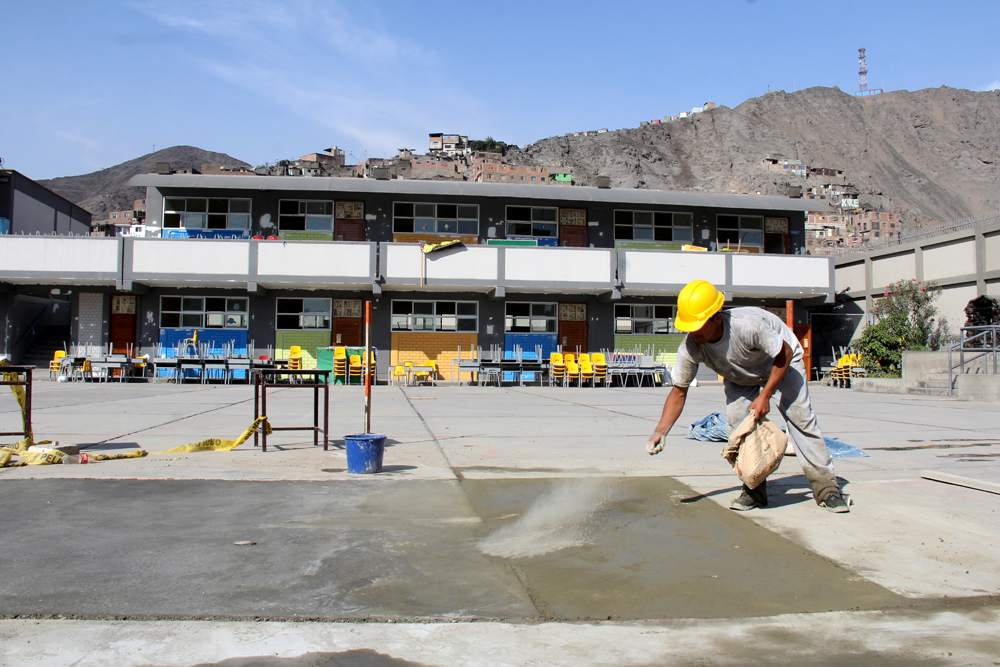Improving School Maintenance with Text Message Alerts in Peru
Abstract
The Peruvian government scaled up a text message campaign based on results that it helped more schools use funds appropriately and on time.
In partnership with researchers, IPA, and J-PAL, Peru’s Ministry of Education is designing and rigorously testing innovative solutions aimed at improving education in the country through an innovative research lab called Minedulab. As part of Minedulab, researchers designed and evaluated an innovative text message alert campaign that “nudged” schools to use allocated funds for maintenance of school facilities. Researchers found that campaign increased adherence to the program and was cost-effective. In response, the agency responsible for the program scaled it up at a national level in 2018.

The Challenge
Governments are responsible for providing public goods like education, infrastructure, and health services to citizens, but many developing countries lack effective provision of these services. While there are many reasons for this, one fundamental challenge is recruiting and motivating civil servants to perform well on their jobs. Evidence suggests that offering financial incentives as a tool to attract better pool of applicants can induce better performance. However, providing financial incentives at a large scale can be very costly. Non-financial incentives may offer a flexible and affordable strategy to increase bureaucrats performance at a large scale, yet little is known about their effectiveness. Researchers designed a study to contribute evidence of the effectiveness of such strategy in the context of the education sector in Peru.
While Peru has made progress in improving school enrollment rates over the last decade, the sector now faces the challenge of improving the quality of education and closing the achievement gap. According to a 2012-2016 report, only 23 percent of children achieve age-appropriate levels of reading comprehension, and only 13 percent reach age-appropriate levels of proficiency in mathematics. In rural indigenous areas, age-appropriate reading comprehension falls to 12 percent and proficiency in math to 7 percent.1 Faced with this challenge, the Ministry of Education has embarked on ambitious educational reforms.
As part of this reform, it is dedicating greater resources to improving educational infrastructure. One such project provides funding to schools for maintenance of school facilities. In 2014, the government allocated 571 million soles (US$197 million), and in 2015, 350 million soles (US$100 million) to more than 50,000 education centers throughout the country. However, the program suffered from insufficient use of funds and a lack of reporting on how funds were spent.
The Evidence
As part of an innovation lab for education policy housed in the Ministry of Education in Peru, called Minedulab, the government worked with researchers Andrew Dustan of Vanderbilt University, Stanislao Maldonado of Universidad del Rosario, and Juan Hernandez of IPA-Peru to pilot and rigorously test the effectiveness of “nudging” school managers, via text message alerts, to use funds appropriately and be accountable for completing maintenance work on time. The research was co-implemented by IPA and the Ministry of Education.
The study found that sending text messages increased the likelihood that maintenance managers performed their activities at the appropriate time, reducing the noncompliance rate in reporting by more than 15 percent. It also found that the impact of the messages is different depending on the content: the impact was greater with “social norm” messages that mentioned that most of their nearby peers completed the work.
The study concluded that use of text messages has the capacity not only to help the implementing agency known as PRONIED (el Programa Nacional de Infraestructura Educativa) in the execution of its budget, but also represents a cost-effective way for the ministry to communicate directly with school personnel responsible for the work.
The Impact
In response to the positive results, as well as a dire need for maintenance of schools due to flooding from El Niño, PRONIED decided to scale up the SMS message campaign nationally. In order to carry out this process promptly and effectively, a working group was formed with the objective of designing and implementing the campaign at the national level. The working group included representatives of PRONIED, MineduLAB and the Directorate of Teacher Welfare and Recognition (DIBRED). The total schools reached by the campaign was 24,000 nationwide in 2018.
This work is licensed under a Creative Commons Attribution 4.0 International License.
Sources
[1] https://www.unicef.org/about/execboard/files/Peru_final_approved_2012-2016_English_10Feb2012.pdf












